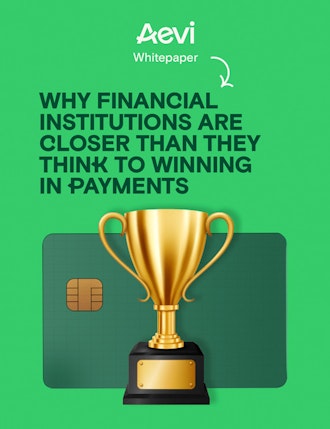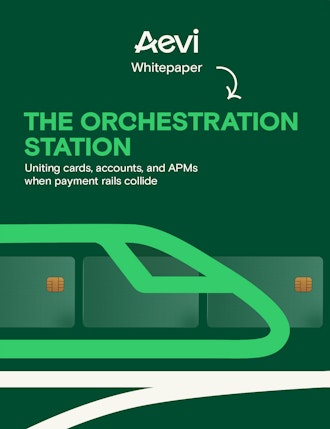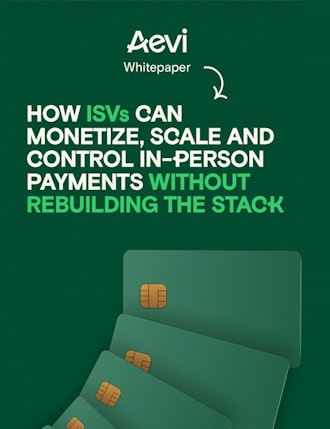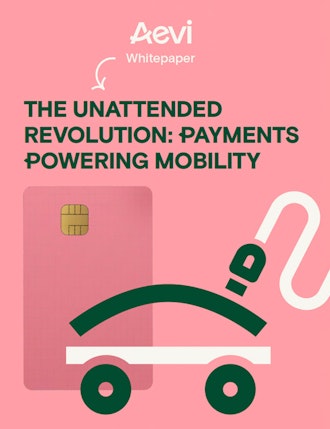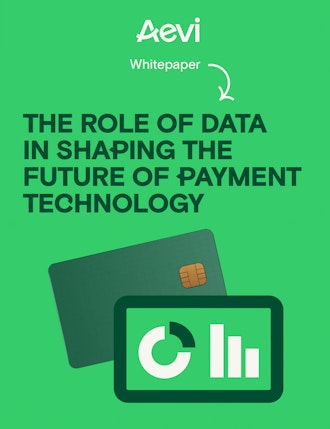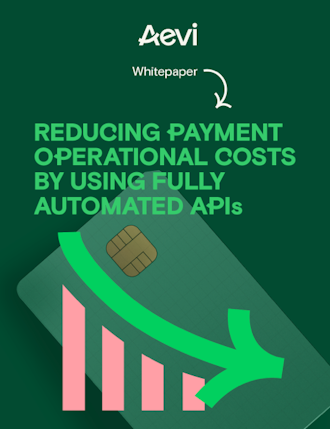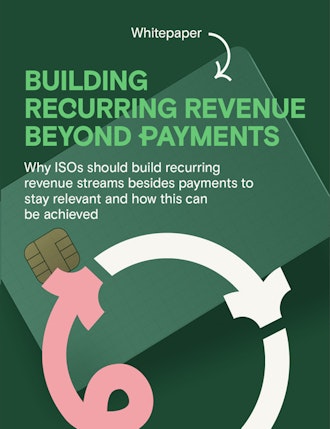Key Insights
-
Payment processors, such as Global Payments Inc., act as bridges, connecting buyers and sellers to ensure smooth and secure transactions.
-
Businesses have the option to build their own payment processors, offering potential benefits such as cost savings, customization, and better control. However, this route requires significant investment and expertise.
-
Pros of custom processors include cost savings, tailored user experience, and enhanced data security. Cons involve high initial costs, complexity, security risks, and ongoing maintenance demands.
Don't have time to read more now? Sign up to our newsletter to get the latest insights directly in your inbox.
Acting like a bridge between buyers and sellers, payment processors, such as Global Payments Inc, Square and Stripe, are the middlemen that ensure online or in-person credit and debit card transactions flow smoothly and securely.
But, what exactly are payment processors, and how do they work? Is there a difference between a payment processor and payment gateway? And finally, is it possible to build your own payment processor, and if so, how? Let’s delve in and find out.
Introduction to payment processing
Think of payment processors like the bridges and highways of the financial world. Just as bridges connect two separate pieces of land, payment processors connect buyers and sellers in the digital economy, as they ensure that transactions get from point A: the buyer’s account, to point B: the seller’s account. Without reliable payment processors, businesses would struggle to efficiently exchange money online and offline, in the same way transportation would grind to a halt without well-maintained bridges and highways.
More specifically, payment processing handles the authorization, funding, and settlement of transactions, ensuring that both parties receive the necessary confirmation and funds. They’re divided into two primary categories: card-present transactions (in-store payments) and online processing (ecommerce payments), such as in the case of Aevi’s partners at MPGS who assist businesses in integrating payment processing seamlessly into their websites and apps, making online transactions smooth and efficient.
However, the involvement of third-party payment processors can present significant challenges for ISOs. These middlemen often impose additional fees, which can eat into profit margins and increase operational costs. In addition to this, relying on third-party processors means less control over the transaction process, leading to potential delays and complications in service delivery. This lack of direct oversight can hinder an ISO's ability to promptly address issues and customize services to better meet their clients' needs.
Given these pain points, building your own payment processor could offer substantial advantages, which we’ll address in detail later on.
Payment processor vs payment gateway
While on the topic of payment processing, it’s important to understand the difference between a payment processor and a payment gateway, as the two are often confused. While a payment gateway, such as Authorize.Net, is responsible for transmitting transaction data securely to the payment processor, the payment processor is responsible for the actual handling and movement of funds; and, just to add context, this is also different from a merchant acquirer, which is typically a bank that handles a merchant’s payment card transactions.
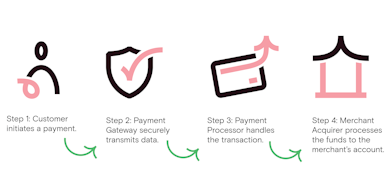
How does a payment processor work?
The payment processing system is made up of several key components:
- Merchant accounts: A special type of bank account required for businesses to accept payments. It acts as a holding account where funds are temporarily stored before being transferred to the business's bank account.
- Payment gateways: These facilitate the transfer of transaction information from the merchant to the payment processor, ensuring secure data transmission.
- Acquiring banks: These banks process the payment on behalf of the merchant, liaising with the cardholder's issuing bank to authorize and complete the transaction.
The transaction flow typically follows these steps:
- A customer initiates a payment on a merchant’s website or at the checkout in a physical store.
- The payment gateway encrypts and securely transmits the transaction details to the payment processor.
- The payment processor forwards the request to the acquiring bank.
- The acquiring bank communicates with the issuing bank to authorize the transaction.
- Once authorized, the payment processor relays the approval to the merchant and the acquiring bank transfers the funds to the merchant’s account.
Can you build your own payment processor?
While the most common route for high-volume retailers, financial institutions, large e-commerce platforms and fintech companies is to subcontract their payment processing to a third-party payment processor like Stripe (as evidenced by the payment processing industry’s projected growth to approximately 198 billion USD by 2032), it's also possible for businesses to build their own payment processor. However, this isn’t a straightforward thing to do, and it does require a lot of time and money.
What type of business would benefit from their own payment processor?
- High-volume retailers: Large online stores can save on fees.
- Financial institutions: Banks, especially smaller, regional banks, want full control, flexibility and customized solutions to stay competitive and showcase their brand to ensure they don’t disappear.
- Subscription services: Companies with recurring payments need tailored billing solutions that they can control.
- Tech-savvy startups: Companies with technical skills aim for unique and competitive systems that can showcase their own technical skills
- Global enterprises: Businesses in multiple countries need multi-currency and local payment options.
These businesses could benefit from custom solutions, better control, and cost savings by creating their own payment processing systems.
How to build your own payment processor
While the specific intricacies of payment processor building are incredibly technical, there are a few key steps and considerations that offer a general idea of what’s involved, including:
- Choosing the technology stack that will power your payment processing system: This involves selecting programming languages , databases, and frameworks that best suit your requirements for scalability, security, and integration.
- Integrating your payment gateway: Acting as the interface for processing payments, this step involves developing or integrating a payment gateway that securely transmits transaction data between your platform and financial institutions.
- Implementing transaction handling functionality: This includes authorization, settlement, and fund transfer between customer accounts and merchant accounts.
- Implementing robust security measures: Ensuring compliance with industry standards such as PCI DSS (Payment Card Industry Data Security Standard) and GDPR (General Data Protection Regulation) protects sensitive data.
- Ensuring compliance and regulatory requirements are met: Navigating and adhering to regulatory requirements, including KYC (Know Your Customer), AML (Anti-Money Laundering), and other relevant regulations based on operating regions.
- Testing and quality assurance: Conduct thorough testing and quality assurance to ensure the reliability and security of your payment processing system before deployment.
- Maintenance and support: Establish ongoing maintenance protocols and support mechanisms to address issues promptly and keep the system running smoothly.
To ensure you get the most secure and effective results, consider partnering with an expert, such as Aevi, to support you with the most challenging aspects of this.
Pros and cons of building your own payment processor
Building your own payment processor can offer significant advantages, although it also comes with notable challenges.
Pros of building your own payment processor:
- Cost saving: Reducing transaction fees paid to third-party processors can lead to substantial savings. This can significantly benefit businesses with high transaction volumes.
- Customization: Full control over the payment processing system allows businesses to tailor the user experience, security measures, and features to their specific needs.
- Data security: Owning the processing system means having direct control over data security.
- User experience: Custom payment solutions can enhance the customer journey, providing a seamless and branded experience.
Cons of building your own payment processor:
- High initial costs: Developing a payment processor requires a significant investment in development, infrastructure, and ongoing maintenance.
- Complexity: Navigating regulatory and compliance requirements.
- Security risks: Ensuring robust security measures to protect against fraud and data breaches is challenging and requires continuous monitoring and updates.
- Time-consuming: The process of building, implementing, and maintaining a payment processor is resource-intensive, demanding a dedicated team and continuous effort.
Future trends in payment processing
The payment processing industry is continuously evolving, with emerging technologies and innovations transforming the scene all the time.
To return to our bridge analogy, a great example of this is Aevi and Silverflow’s partnership, as it exemplifies how turnkey solutions act as bridges, empowering banks and acquirers to re-engage in direct payment processing. This collaboration enables European and North American acquirers to offer modern, data-driven processing with an Android-led in-person payment solution, catering to ISVs with all-in-one smart POS products and stand-alone payments under a single, unified platform. By reclaiming ownership of merchant propositions, Aevi and Silverflow provide a flexible, integrated infrastructure. This seamless bridge allows banks to re-establish merchant relationships, enhancing payment processing capabilities.
Building a payment processor allows businesses and banks to save costs, customize systems, and control data and user experience. However, it requires significant investment and ongoing commitment to manage complexities and security risks. As the industry evolves, partnerships and innovative solutions will be crucial in shaping the future of payment processing. Are you ready for it?
Interested in reading more around this subject? Here are some useful articles…


